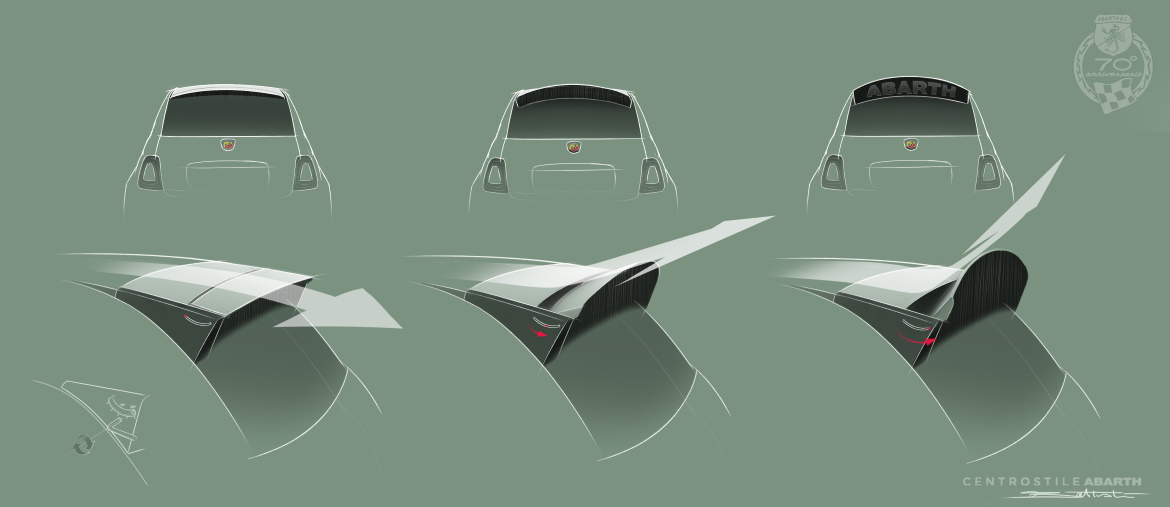Carlo Abarth’s “performance concept” went way beyond a quest for pure power, maximum speed, and acceleration. His thoughts turned to all-round performance, and therefore to research and development into innovative technical solutions, to improve aerodynamics, road holding and brake power. The new Abarth 695 70° Anniversario pays tribute to this very record with its new Spoiler ad Assetto Variabile, a characteristically Abarth racing component that also recalls the spoiler of the 1980s Lancia Delta Integrale, which produced the sensation of being a real rally driver when on the road.
The fruition of the work of Abarth engineers in the FCA wind tunnel in Orbassano, near Turin, and on the Vallelunga circuit near Rome, the Spoiler ad Assetto Variabile improves the car’s aerodynamic performance and therefore increases grip on fast mixed courses and stability at high speeds. For Carlo Abarth, performance was a constant requirement, especially on the racetrack. Just like in a race, where it is not unusual to see technicians manually fine-tune the spoiler tilt so the driver can set the car’s behavior according to the course and his driving style, the spoiler fitted to the Abarth 695 70° Anniversario can also be manually adjusted, into 12 positions with tilt ranging from 0° to 60°. In an attempt to offer maximum flexibility, drivers are given the option to adjust the spoiler depending on the course they are about to tackle, as well as positioning it as they wish, regardless of performance.
At maximum tilt (60°), at a speed of 200 km/h, the spoiler increases aerodynamic load to 42 kg. Especially on fast mixed courses, this ensures excellent vehicle dynamics and improved stability at high speeds. A concrete example would be the “Rome Curve” at the Vallelunga circuit. The Spoiler ad Assetto Variabile can reduce steering correction by almost 40%, for a “cleaner” and more efficient drive, giving the driver greater confidence to push back the limits. Optimization of aerodynamics also affects acoustics, curated ideally to reduce turbulence, for a more comfortable daily run around.
From 1956 to 1966, Scorpion cars set as many as 133 records, the result of extreme use of the concepts and laws of aerodynamics. This illustrious history includes the 8 astonishing records broken by the Abarth 1000 Bialbero Record Pininfarina in 1960. Largely thanks to the implementation of the laws of aerodynamic efficiency, the Abarth 1000 Bialbero Record Pininfarina was immediately nicknamed the “silver torpedo,” for its sleek streamlining. Developed in the wind tunnel at the Polytechnic University of Turin, the new aerodynamics resulted in an exceptional Cx of 0.20.












